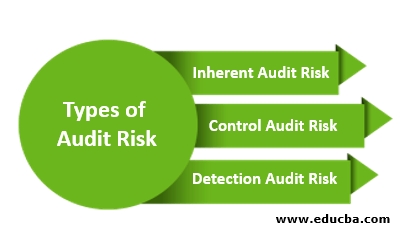Updated July 19, 2023

Definition of Audit Risk
The term audit risk refers to the risk that the financial statements contain material misstatements even when the audit report is an unqualified audit report and states that the financial statements are free from any material misstatements. In other words, it represents a risk that the audit report issued by the auditor is not the true representative of the financial position of the company either due to fraud or due to error.
Explanation
The main objective of the audit process is to reduce the risk of error and fraud in financial records of the company to an appropriately low level. It is a legal responsibility of an audit firm to provide correct opinion over the financial statements as many stakeholders like shareholders, lenders, investors depend upon the credibility of financial statements to make their decisions.
During an audit process, an audit firm examines financial transactions happened during the reporting year, enquires and substantiate the general ledgers, check internal controls and other factors and then provide their opinion as to whether the financial statements are free from misstatements due to error or fraud or not. Audit firm generally are insured against audit risk and potential legal liabilities.
Formula for Audit Risk
The general formula for audit risk is as follows:
Audit risk equals to the product of Inherent risk (IR), Control risk (CR)& Detection risk (DR)
Audit risk is the result of the product of inherent risk, control risk, and detection risk. Auditors come across these types of risks while performing audits. We will discuss in detail about these risk in further headings.
Example of Audit Risk
The examples relating to audit risk are as follows:
For example, a newly established financial organization is trading in complex derivative instruments; this will lead to a high level of inherent risk for audit risk assessment purposes. The inherent risk is kept at 50% by audit firm ABC Ltd. And since the company is new and everything is in the set-up phase, the company is yet to have an internal audit department. Therefore, control risk is also kept ata higher level i.e. 60%. The audit firm wants to keep the overall audit risk below 10%.
Solution:
Audit Risk is calculated using the formula given below:
- 0.10 = 0.5 x 0.6 x Detection Risk
- Detection Risk = 0.1/0.3
- Detection Risk = 0.333
- Detection Risk = 33%
Types of Audit Risk
Total audit risk is the product of below three types of risks:
- Inherent Audit Risk: Inherent risk occurs due to error and omission in highly complex transactions which were recorded either on the basis of the judgment or estimation. This audit risk is not impacted by the control failures in the organization. In other words, when the risk of misstatement in financial statements occurs due to factors other than control failures, then it is called as an inherent risk.
- Control Audit Risk: Control audit risk is the risk of misstatement in financial statements happening due to the absence of relevant controls or failure of existing internal controls in the organization. The risk is considered as high in the companies where there are not sufficient controls in place to proactively detect or prevent frauds or errors.
- Detection Audit Risk: Detection risk occurs when auditors are unable to or fail to detect misstatements in financial statements due to error or fraud. That is the audit procedure applied by the audit firm to examine the financial statements was not sufficient to detect the material misstatement due to frauds or errors. The detection risk generally occurs due to sampling or non-sampling errors.
Audit Risk Model
The audit risk model is the framework used by audit firms to manage different types of audit risk. The auditors generally start audit procedures by analyzing the inherent and control risk and gathering the understanding and knowledge regarding the business entity environment. Detection risk is considered as a residual risk that is set after deciding the level of inherent and control risk with regard to audit procedure and the total risk level that the auditor or audit firm is able to accept.
When control risk and inherent risk level are assessed to be kept as high by the auditors, the detection risk is low to maintain the total audit risk level at the required level or acceptable level. And when inherent and control risks are kept at lower, the detection risk is at a higher level. The auditors can manage or lower the detection risk by increasing the size of sampling for audit purposes in the organization.
Importance of Audit Risk
The audit risk assessment is the core of every audit procedure. The importance of audit risk can be explained through the following statements:
- Assessment of client-specific risks at the start of the audit process drives the audit in the right direction and helps in reducing the probability of over-auditing.
- The audit risk assessment helps auditors to give a correct opinion over the financial statements of the company.
- If audit risks are not assessed in the initial phase, a complete audit procedure is termed as non-compliant to GAAP (generally accepted accounting principles).
- Auditors cannot check each and every transaction of the entity, and audit risk assessment helps in increasing the focus where risk is high i.e. risk- based approach towards auditing.
Conclusion
Audit risk assessment at the onset of the audit procedure is an integral part of the audit procedure. Audit risks help driving the audit in the right direction and help in setting the risk appetite of the audit procedure. Audit risk also helps auditors in laying down the audit strategy for a particular organization.
Recommended Articles
This is a guide to Audit Risk. Here we also discuss the definition and types of audit risk along with example and importance. You may also have a look at the following articles to learn more –


